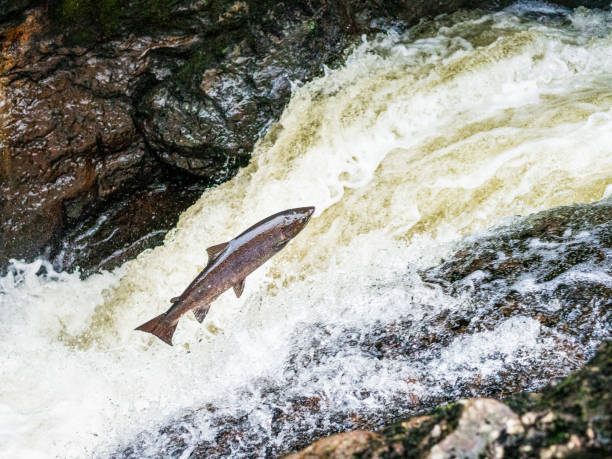Wild Atlantic salmon “facing major threat”

Climate change is threatening a growing number of species including the Atlantic salmon, warns an update to the World Conservation Union (IUCN) red list of threatened species.
The information, released at the COP28 UN climate conference in the United Arab Emirates, also includes the first global freshwater fish assessment, and highlights the impact of illegal logging and trade on mahogany.
Atlantic salmon (pictured) is placed in the “near threatened” category. New evidence says that globally, the population has declined by 23% between 2006 and 2020.
Conservation efforts have successfully brought two antelope species back from the brink of extinction, but changing climatic conditions could undermine their future.
Atlantic salmon are now restricted to a small portion of the northern European and North American rivers they inhabited a century ago.
They have since faced multiple threats over the course of their long-distance migrations between freshwater and marine habitats.
Climate change affects all stages of the Atlantic salmon’s life cycle, influencing the development of young salmon, reducing prey availability and allowing invasive alien species to expand their range.
The update says dams and other barriers block access to spawning and feeding grounds, while water pollution and sedimentation, primarily from logging and agriculture, lead to higher mortality of young salmon.
Breeding with escaped farmed salmon threatens many wild populations, and may weaken their ability to adapt to climate change.
It also says mortality due to lice from salmon farms is also of great concern. And a significant rising threat is the invasive Pacific pink salmon, which is spreading rapidly across northern Europe.
Dr Grethel Aguilar, IUCN Director General, said: “Climate change is menacing the diversity of life our planet harbours, and undermining nature’s capacity to meet basic human needs.”

